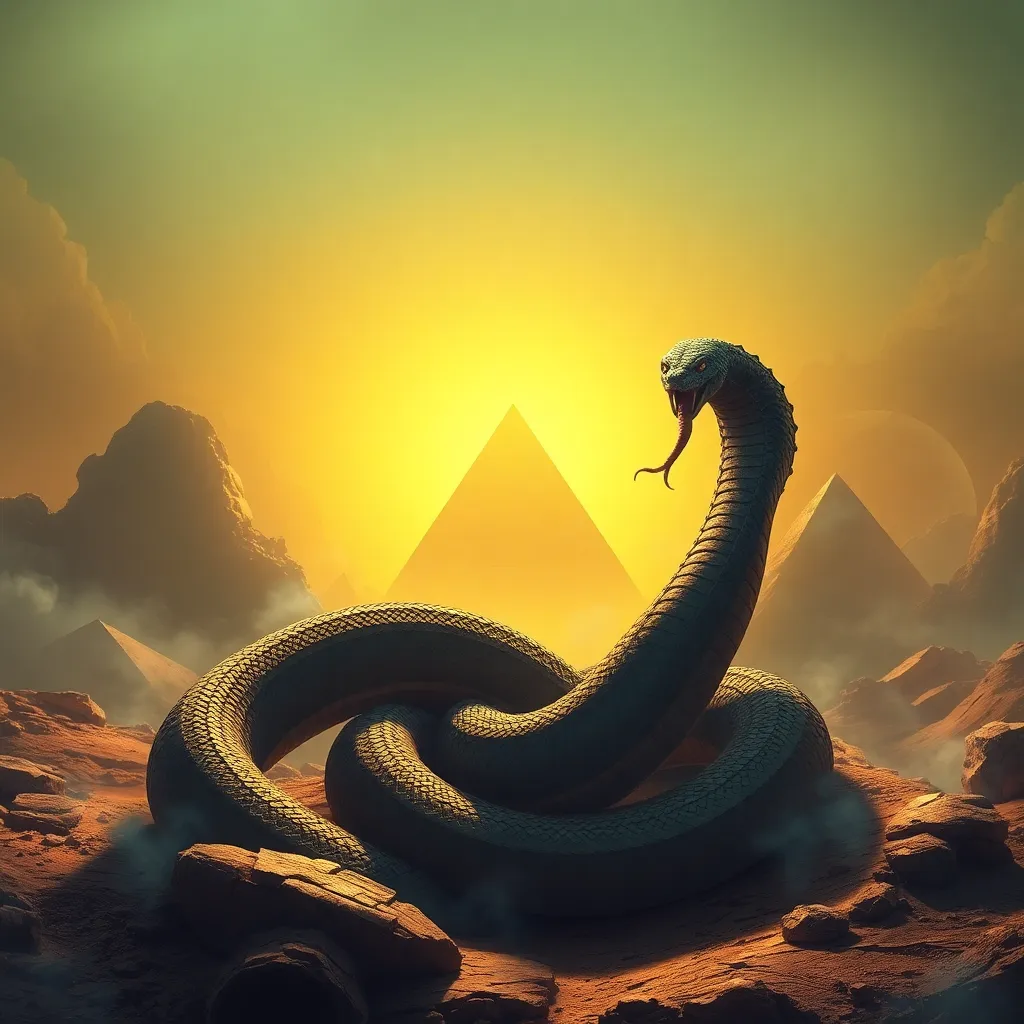The Serpent’s Curse: A Tale of Chaos and Order in Ancient Egypt
I. Introduction
Ancient Egyptian mythology is a rich tapestry woven with stories, symbols, and deities that reflect the beliefs and values of one of history’s most fascinating civilizations. Central to these narratives is the theme of chaos and order, embodied in the duality of certain creatures, most notably the serpent. This article explores the Serpent’s Curse, a compelling myth that encapsulates the struggle between chaos and order in Ancient Egyptian culture.
The Serpent’s Curse serves as a central theme through which we can understand the balance that the ancient Egyptians sought to maintain in their world. By examining this myth, we will delve into the broader implications of chaos and order as they relate to the daily lives, spirituality, and society of Ancient Egypt.
II. The Symbolism of the Serpent in Egyptian Culture
Serpents in Ancient Egyptian mythology are complex symbols that can represent both protection and destruction. Two notable serpentine figures are Apep and Wadjet.
- Apep: A chaotic serpent who embodies chaos and disorder, often depicted as a monstrous creature attempting to devour the sun god Ra during his nightly journey through the underworld.
- Wadjet: A protective deity often depicted as a cobra, symbolizing royalty and the safeguarding of the pharaohs. She represents the order and stability that the ancient Egyptians sought to uphold.
The serpent serves as a dual representation: while it can signify chaos and disorder, it also plays a crucial role in maintaining order through its protective deities.
III. The Historical Context of Chaos and Order
The political landscape of Ancient Egypt was often tumultuous, marked by invasions, civil strife, and rivalries among factions. Major historical events exemplified this chaos:
- Invasions by foreign powers such as the Hyksos.
- Civil wars that arose during periods of weak pharaonic rule.
- Natural disasters that disrupted agricultural stability.
In response to these chaotic forces, pharaohs played a vital role in restoring order and stability. Through rituals, governance, and military campaigns, they were viewed as the embodiment of Ma’at, the principle of order and justice that governed the universe.
IV. The Serpent’s Curse: Mythological Origins
The myth of the Serpent’s Curse tells the story of a powerful curse unleashed by Apep, casting a shadow of chaos over the land. Key characters in this tale include:
- Ra: The sun god, representing order and light.
- Apep: The embodiment of chaos, seeking to disrupt the balance of the universe.
- Isis: A goddess of magic and healing who plays a role in combating the curse.
This curse serves as a metaphor for human struggles against chaos, illustrating the constant battle between light and darkness, order and disorder. The lessons from this myth highlight the importance of balance, power, and responsibility in maintaining harmony.
V. The Impact of the Serpent’s Curse on Ancient Egyptian Society
The Serpent’s Curse had a profound impact on Ancient Egyptian society, influencing various aspects of life:
- Religious Practices: The curse underscored the importance of rituals aimed at appeasing the gods and invoking their protection against chaos.
- Art and Literature: The tale inspired numerous artistic representations and literary works, including temple inscriptions and papyrus scrolls that depicted the struggle between Apep and Ra.
- Morality: The curse reinforced societal norms regarding morality and ethics, emphasizing the consequences of straying from the path of order.
VI. The Intersection of Chaos and Order in Daily Life
The ancient Egyptians were acutely aware of the chaos that could arise from their environment, such as floods and droughts. To cope with these uncertainties, they developed rituals and practices aimed at invoking order and stability:
- Rituals: Ceremonies were conducted to honor deities and seek their favor for bountiful harvests and protection from calamities.
- Magic and Superstition: Amulets and charms were commonly used to ward off evil and chaos, reflecting a deep belief in the supernatural’s role in everyday life.
These practices highlight the Egyptians’ continuous effort to maintain balance in a world filled with unpredictability.
VII. Legacy of the Serpent’s Curse in Modern Interpretations
The legacy of the Serpent’s Curse endures in modern interpretations of chaos and order. The tale is often reflected in contemporary literature and art, symbolizing the timeless struggle between opposing forces. Furthermore, the themes of chaos and order continue to resonate in modern society, as we navigate through our own complexities.
When comparing the Serpent’s Curse to myths from other cultures, parallels can be drawn:
- In Greek mythology, the battle between Zeus and the Titans echoes similar themes of chaos vs. order.
- In Norse mythology, the serpent Jörmungandr represents chaos and is destined to battle Thor during Ragnarok, highlighting the cyclical nature of chaos and order.
VIII. Conclusion
The Serpent’s Curse serves as a powerful narrative that encapsulates the themes of chaos and order prevalent in Ancient Egyptian mythology. Through this tale, we are reminded of the importance of balance in life and the constant struggle to maintain it. The enduring relevance of these themes invites us to explore further the rich tapestry of Ancient Egyptian mythology and its insights into the human experience.




